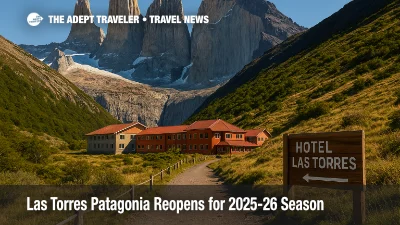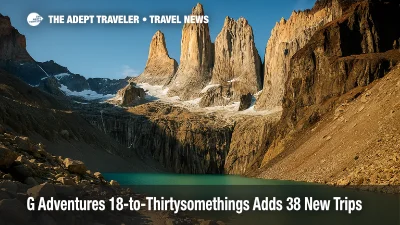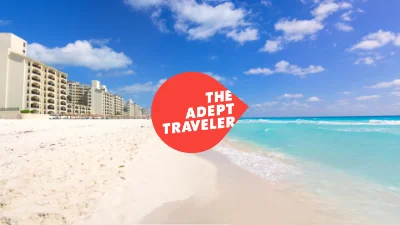Easter Island
Travel to Easter Island and step into an enigmatic world where the Pacific Ocean whispers legends through the ancient stone monoliths scattered across its pristine landscape. As you arrive, the salty sea breeze dances through your senses, mingling with the earthy scent of volcanic soil, inviting you to delve deeper into this mystifying land. Vibrant shades of azure stretch across the horizon, met by sweeping vistas of verdant hills and rugged cliffs, forming a stunning backdrop for the majestic moai statues, silent sentinels standing guard with an air of timeless wisdom. As you wander this UNESCO World Heritage site, listen to the rhythmic crash of the waves against rocky shores while soaking in the vivid palette of colors at sunset—a testament to the untouched beauty of this remote island. The promise of exploring its rich culture, tasting traditional dishes like curanto, and uncovering the mysteries of its storied past awaits to kindle your adventurous spirit with an irresistible allure, urging you to learn more about the captivating allure of Easter Island.
Easter Island Travel Season
Travel to Easter Island offers a unique opportunity to explore one of the world's most remote and enigmatic destinations. The best time to visit this mysterious locale greatly depends on personal preferences regarding weather, crowds, and local events. Understanding the seasonal trends can enhance your travel experience and ensure that your journey to Easter Island is everything you hope it to be.
The peak travel season for Easter Island typically spans from December to February, coinciding with the Southern Hemisphere's summer months. During this period, temperatures are pleasantly warm, often ranging from 70°F to 80°F, making it ideal for exploring the island's famous Moai statues and enjoying various outdoor activities. However, with these favorable weather conditions comes an influx of tourists, resulting in larger crowds at attractions and higher accommodation prices. Travelers who choose to visit during this time can expect a vibrant atmosphere with many opportunities to engage with fellow tourists and local inhabitants.
For those seeking to travel to Easter Island when the weather remains agreeable but crowds are smaller, the shoulder months of October to November and March to April are particularly ideal. During these periods, temperatures are still comfortable, and there is less rainfall compared to the winter months. Visitors can experience a more relaxed pace, allowing for more intimate encounters with the island's cultural and historical treasures without the hustle and bustle of peak season tourism. Additionally, these months offer better deals on flights and accommodations, making them economically favorable for budget-conscious travelers.
Winter on Easter Island, which extends from June to August, brings cooler temperatures and a higher chance of rain. While it is undoubtedly the off-peak travel season, this time offers a certain tranquility that can be appealing to those willing to embrace a bit of unpredictability in the weather. The reduced number of tourists means that the island's scenic landscapes, including the famous Ahu Tongariki and Orongo Ceremonial Village, can be appreciated in a more serene setting. Additionally, this is a period for immersing in local culture as the Rapa Nui people go about their daily lives unaffected by the seasonal tourist waves.
A standout event that attracts many visitors is the Tapati Rapa Nui Festival, typically held in the first two weeks of February. This festival is a vibrant celebration of Rapa Nui culture, featuring traditional music, dance, and competitions that highlight the heritage of Easter Island. If your travel to Easter Island coincides with this time, participating in or witnessing the festivities can provide a deeper understanding of the island’s unique cultural identity.
Whether you're drawn by the allure of warm summer days, the tranquility of the cooler months, or the cultural immersion during local festivals, Easter Island offers something for every type of traveler. Assessing the seasonal differences ensures that when you travel to Easter Island, your experience aligns with your ideal vacation, be it soaking up the sun, reveling in cultural displays, or savoring tranquil natural beauty away from the crowds.
The Weather and Seasons in Easter Island
The weather on Easter Island, a remote yet fascinating location in the Pacific Ocean, is defined by its subtropical maritime climate. This makes it a captivating destination for travelers year-round. Easter Island's weather remains mild, with no extreme temperature variations between seasons, allowing visitors to enjoy the island's rich cultural and natural attractions comfortably.
Climate Throughout the Year
Travelers visiting Easter Island can expect temperate conditions throughout the year. Temperatures only mildly fluctuate from summer to winter. During the summer months, which last from December to March, temperatures hover around 80°F (27°C), offering warm and enjoyable weather perfect for exploring the island's historic sites. In contrast, the winter period, spanning from June to August, sees temperatures averaging about 70°F (21°C), making the climate still favorable for outdoor activities.
Rainfall and Humidity
Though Easter Island's climate is generally dry, rainfall is a regular occurrence, contributing to the island's lush landscape. The wettest months tend to be April and May, with occasional heavy downpours, whereas the dry season runs from September to November. Travelers should anticipate moderate humidity levels throughout the year, given the island's maritime setting. Humidity levels are generally comfortable, around 80% annually, although they can feel more intense during rainier periods.
Best Time for Travel
The best time to travel to Easter Island, considering both weather conditions and cultural events, is typically from November to March. During these months, the weather is at its warmest and driest, enhancing outdoor experiences like hiking, moai viewing, and enjoying the pristine beaches. February is particularly appealing due to the Tapati Rapa Nui Festival, a celebration of local culture and traditions that offers an immersive experience for travelers.
Significant Seasonal Changes and Local Events
While the seasonal changes on Easter Island are subtle, they occasionally influence local activities and travel experiences. For instance, strong ocean swells are more common from May to September, which can affect water-based activities such as swimming and diving. Easter Island's natural and cultural richness is accessible all year, but aligning travel plans with the island's festivals, like the Tapati, allows travelers a unique cultural immersion and the chance to engage with the local Rapa Nui community in vibrant celebrations.
For an unforgettable experience, travel to Easter Island promises favorable weather conditions and a wealth of cultural engagements. This ensures that whether under sunny skies or amidst warm tropical showers, visitors will be captivated by the island's mystical allure. By planning your travel to Easter Island at the right time, you ensure an enriching experience that takes full advantage of its spectacular climate and vibrant culture.
Accepted Payment Methods and Other Payment Information in Easter Island
When planning a travel to Easter Island, understanding the various payment options available is essential for a seamless experience. The local currency in Easter Island is the Chilean Peso (CLP), which is widely accepted across the island for all types of purchases. While businesses in the main town of Hanga Roa, where most tourist activities are concentrated, are becoming more accommodating towards foreign currencies, it is always advisable to use Chilean Pesos to avoid potential conversion fees or unfavorable exchange rates.
For those traveling to Easter Island, the use of credit cards is an important consideration. Credit card usage on the island is generally supported, particularly in larger establishments such as hotels, restaurants, and some shops. Visa and Mastercard are the most widely accepted credit cards on Easter Island, offering relative convenience to travelers. American Express and Discover, however, are less frequently accepted, and travelers relying on these may face limitations in terms of where they can use their cards. It's always good practice to carry some cash as a backup for smaller, local vendors who may not have card facilities.
Cash usage remains prevalent on Easter Island, especially in smaller shops and local markets where credit card terminals may not be available. ATMs are located in Hanga Roa, although their availability can sometimes be limited, and they may run out of cash during peak travel seasons. It's wise to ensure you have sufficient cash for your entire stay, especially for visits to remote areas of the island where cash is the only payment option.
When considering travel to Easter Island, understanding the local tipping etiquette can enhance your experience. Tipping is not compulsory on Easter Island but is appreciated, especially for exceptional service. In restaurants, a tip of approximately 10% is customary, although it’s always best to check if a service charge has already been included. Tipping taxi drivers is not a standard practice, but rounding up the fare is a common gesture for good service.
An additional piece of advice for those on travel to Easter Island is to inform your bank of your travel plans to avoid any disruptions with card services while on the island. This communication is crucial to ensure that your transactions are processed smoothly and without issue.
For anyone contemplating travel to Easter Island, staying informed about the best payment methods can greatly enhance the travel experience. Knowing when and where to use cash or credit cards, understanding local customs like tipping, and planning for potential challenges ensures that your adventure on this unique island remains uninterrupted and enjoyable.
Why You Should Travel to Easter Island
Located in the southeastern Pacific Ocean, Easter Island is a destination that captures the imagination of travelers with its mystique and history. Here's why you should consider making this unique island your next travel destination.
Intoxicating Mystique of the Moai Statues
One of the most compelling reasons to travel to Easter Island is the enigmatic Moai statues. These monolithic human figures, carved by the Rapa Nui people, have stood watch over the island for centuries. As a traveler, standing in the presence of these silent sentinels provides a sense of awe and wonder. No trip to Easter Island would be complete without exploring these world-renowned archaeological wonders.
Cultural Richness of the Rapa Nui People
The indigenous Rapa Nui culture offers a fascinating look into the lives and traditions of Easter Island's inhabitants. By attending traditional dances, participating in cultural festivals, and engaging with the local community, travelers gain invaluable insights into the customs and worldviews of the Rapa Nui people. This cultural immersion is an enriching experience that few other destinations can match.
Breathtaking Natural Landscapes
Traveling to Easter Island offers much more than historical monuments and cultural experiences; the island is also home to spectacular natural beauty. From the rugged coastline and azure waters to lush hills and extinct volcanic craters, Easter Island's landscapes provide a stunning backdrop for outdoor enthusiasts. Hiking, diving, and exploring these natural wonders are among the unforgettable experiences for those venturing to this remote location.
Astronomical Stargazing Opportunities
The remote location of Easter Island makes it an ideal spot for stargazing. Travelers can marvel at the brilliance of the Milky Way stretching across the night sky, unobstructed by city lights or pollution. Whether you're an amateur astronomer or simply an admirer of the celestial world, the starlit skies of Easter Island offer a mesmerizing experience that you'll cherish long after your visit.
Intriguing Archaeological Sites
Beyond the Moai statues, Easter Island is rich with archaeological sites that each tell their own story. Visitors can explore ancient ceremonial villages, stone platforms called ahu, and petroglyphs that highlight the island's complex cultural history. Each site adds depth to the narrative of the Rapa Nui people, making it an enthralling destination for history enthusiasts and archaeologists alike.
Peaceful Isolation from the Modern World
For travelers seeking a serene escape from the hustle and bustle of modern life, Easter Island provides a tranquil retreat. Its isolation creates a peaceful atmosphere where visitors can disconnect from daily stressors and reconnect with nature. This remoteness lends Easter Island an unparalleled sense of calm and detachment, making it a perfect place for relaxation and reflection.
Adventure Sports and Outdoor Activities
Adventure seekers will find a wealth of outdoor activities to enjoy on Easter Island. Travelers can engage in scuba diving in its clear waters, exploring underwater caves, and snorkeling among vibrant marine life. Hiking the volcanic landscapes or horseback riding across the island’s expansive plains provides exhilarating opportunities to experience the island's natural beauty on a more personal level.
Unique Flora and Fauna
Easter Island boasts unique plant and animal life found nowhere else in the world. The island’s bird species and endemic plant life present intriguing opportunities for nature enthusiasts and scientists alike. Traveling to Easter Island allows you to observe distinctive species in their natural habitat, offering a chance to appreciate the island’s ecological diversity.
Bursting Colors of Rapa Nui Traditions
The island’s vibrant traditions and artistic expressions, showcased within festivals such as Tapati Rapa Nui, add dynamic color and life to the traveler’s experience. These cultural celebrations showcase traditional music, dance, and sports, allowing visitors to experience the lively spirit of the Rapa Nui culture firsthand.
Historical and Cultural Wisdom
Easter Island serves as a live classroom where travelers can learn about human history, cultural development, and ecological change. By visiting museums, engaging with local historians, and through educational tours, travelers gain a deeper understanding of how the Rapa Nui people have interacted with their environment over centuries. This learning aspect provides a profound backdrop to the natural and cultural wonders of Easter Island.
The History of Easter Island
Easter Island, known locally as Rapa Nui, is one of the most remote islands on Earth and a destination steeped in mystery and history. Travelers interested in ancient cultures will find its background fascinating, marked by incredible feats of artistic and architectural ingenuity. The island is primarily known for its mysterious moai statues, which were carved by the Rapa Nui people between 1400 and 1650 AD. These monolithic figures, which are scattered across the island, stand as a testament to the technical and cultural prowess of a civilization that thrived in isolation. When you travel to Easter Island, the sight of these grand statues, with their solemn expressions and extraordinary size, is genuinely awe-inspiring.
To travel to Easter Island is to walk in the footsteps of history. This remote volcanic island is situated in the southeastern Pacific Ocean, and it has been a territory of Chile since the late 19th century. Its isolation has contributed to its unique cultural and historical development, independent of outside influences for centuries. Recent history has unearthed more about the Rapa Nui people, including their ability to overcome environmental challenges and develop a distinct society that has intrigued historians and archaeologists worldwide. Studies have shown the island suffered ecological collapse, yet its society adapted creatively to survive, making it a profound case study of resilience. Travelers to Easter Island will appreciate learning about these findings, deepening their understanding of the island's rich past.
A visit to Easter Island is not complete without exploring its significant archaeological sites, such as Ahu Tongariki and Rano Raraku, the quarry where most of the moai were carved. Ahu Tongariki is home to the island's largest ceremonial platform, with a lineup of fifteen restored moai. Rano Raraku offers a glimpse into the moai construction process, with numerous unfinished statues along its slopes. These sites allow travelers to Easter Island to connect intimately with the island’s ancient culture and the skill of its people, whose legacy continues to captivate the world. Engaging with local guides can provide deeper insights into the significance of these monumental structures, enhancing the overall travel experience.
Culturally, Easter Island maintains its allure beyond its historical artifacts. The Rapa Nui culture is vibrant, with traditions and customs still practiced today. Visitors who travel to Easter Island during the Tapati Rapa Nui festival can experience a cultural celebration of music, dance, and crafts, providing a colorful window into contemporary island life. This dynamic expression of heritage is an invitation for travelers to immerse themselves in the living culture of Easter Island. As history lovers explore this open-air museum, they are urged to respect and help preserve the delicate balance between the island’s past and its present. The island's timeless appeal promises not just a journey through the annals of history but also a deeper appreciation of an enduring cultural identity.
The Culture of Easter Island
Easter Island, known locally as Rapa Nui, is one of the most remote inhabited islands in the world, yet it offers a distinctly rich cultural tapestry that is magnetic for the culturally curious traveler. The people of Easter Island, or the Rapa Nui, have long preserved their traditions amidst the island’s relative isolation, offering travelers a window into a unique and vibrant way of life. At the heart of these cultural traditions is the ongoing reverence for the moai statues, the colossal figures that have become global symbols of Easter Island. Travelers to Easter Island will find that these statues are not just historical ruins but are deeply embedded in the spiritual and community life of the Rapa Nui, representing ancestors that still command respect and adoration today.
The festivals on Easter Island offer an extraordinary insight into Rapa Nui culture and are a highlight for anyone who travels to Easter Island. The most famous is Tapati, a vibrant festival held every February that celebrates Polynesian traditions and the island's compelling history. During this festival, the island bursts to life with colorful processions, music, dance, and competitions that recall the island’s ancient past. Travelers are invited to witness and even partake in activities such as canoe racing and body painting, which are imbued with historical significance and show the Rapa Nui's intrinsic connection to their land and ancestors.
Daily customs on Easter Island further highlight the island's distinctive cultural identity. Community is key for the Rapa Nui people, with a strong emphasis on family and shared life. This sense of community can be experienced firsthand by travelers through staying in local accommodations or participating in community-led tours. The dietary culture is remarkable as well, with traditional meals featuring local seafood, sweet potatoes, and plantains. The preparation and consumption of these meals are communal activities that offer travelers another intimate look at Rapa Nui hospitality and lifestyle.
Cultural expressions such as art, music, and dance permeate life on Easter Island and offer enchanting experiences for visitors. Rapa Nui art, notably wood carving and stone sculpture, continues to thrive, often reflecting the rich mythology and ancestors of the island. Traditional music and dance are integral to cultural ceremonies and festivities, featuring unique instruments and rhythmic movements that tell stories of the island's heritage. Importantly, there are ongoing cultural preservation efforts that safeguard these traditions against modern influences, ensuring that the authentic Rapa Nui culture remains alive for future generations. Travelers to Easter Island can explore these efforts, often guided by local experts who are eager to share their stories and invite you to become a part of the island's living history.
The Culinary Experience of Easter Island
Travel to Easter Island offers an incredible culinary journey that delights the senses with its unique blend of Polynesian and South American influences. Located in the southeastern Pacific Ocean, Easter Island, or Rapa Nui as it is known by its inhabitants, promises an unparalleled gastronomic adventure. The island's isolation has led to a reliance on local and sustainable ingredients, providing a farm-to-table experience that showcases the vibrant flavors of the region. Seafood plays a significant role in the local cuisine, with fresh fish such as tuna, mahi-mahi, and swordfish often taking center stage in many dishes. These are usually prepared using traditional cooking methods, which include grilling or wrapped in banana leaves and cooked underground, a practice known as "umu," reflecting a deep-rooted respect for their cultural heritage.
A trip to Easter Island wouldn’t be complete without sampling some of its must-try local dishes. Po’e, a traditional Rapa Nui dessert made from bananas or pumpkin and flour, is often enjoyed during local feasts. Takaka, a savory bread made from shredded taro leaves, coconut milk, and crab meat, offers a taste of the island's indigenous ingredients. Visitors can also savor the taste of meat-rich dishes such as "renga renga," a unique preparation involving spiced rooster stew. For those interested in beverages, Easter Island crafts local beers and spirits infused with the island’s natural flavors, offering a distinct taste experience. While the island does not produce its wines, the imported Chilean wines available on the island complement the local fare perfectly, enhancing the culinary voyage.
Dining on Easter Island comes with a choice of experiences, from casual meals at local food markets and street vendors to exquisite dishes at fine dining establishments. The local markets are a must-visit, offering a vivid array of fresh produce and traditional foods. Visitors flock to these bustling hubs to enjoy the vibrant atmosphere and sample street foods that highlight the island’s authentic flavors. For a more refined experience, several fine dining options offer contemporary interpretations of traditional dishes, where chefs incorporate innovative techniques to create unique culinary masterpieces. This diversity in dining settings provides travelers with the opportunity to immerse themselves in the local culture, which is integral to understanding the island’s gastronomic landscape.
The culinary customs of Easter Island are a reflection of its rich cultural tapestry and the deep-seated traditions of its people. Seasonal dishes and food festivals further illuminate these customs, offering travelers a chance to partake in communal gatherings that celebrate the island's bountiful harvests and cultural heritage. While traditional meat and seafood dishes dominate, Easter Island is becoming increasingly accommodating to varying dietary preferences. Vegan and vegetarian options, though limited, are available, with many restaurants offering creative plant-based dishes using local vegetables and fruits. Whether you're a carnivore or a herbivore, the culinary experience on Easter Island is a testament to the island’s commitment to preserving its culinary legacy while welcoming modern dietary trends. This blend of tradition and innovation ensures that your travel to Easter Island will be a memorable culinary adventure.
What to See and Do in Easter Island
Easter Island, renowned for its enigmatic moai statues, offers a rich tapestry of culture, history, and natural beauty. Travel enthusiasts of all kinds can discover diverse experiences on this remote island. Whether you're a family looking for adventurous escapades or a solo traveler eager for cultural immersion, Easter Island has something unique for everyone.
Marvel at the Moai Statues
No travel to Easter Island is complete without a visit to the iconic moai statues. These massive stone figures, some towering up to 33 feet, are scattered across the landscape, particularly at Ahu Tongariki, the island's largest ceremonial platform. The awe-inspiring sight of 15 standing moai against the backdrop of the Pacific Ocean provides a mystical and unforgettable experience, perfect for history buffs and families looking to engage in storytelling past.
Explore the Rano Raraku Quarry
Located in the heart of Easter Island is the Rano Raraku Quarry, the birthplace of the moai. This volcanic crater workshop is home to numerous unfinished statues, providing insight into the island's sculpting history and techniques. Adventure seekers can hike the paths around the quarry, taking in the breathtaking scenery of wild horses and native flora, making it an enriching experience for nature lovers and photographers alike.
Relax at Anakena Beach
For those craving relaxation after a day of exploration, Anakena Beach is an ideal spot. This picturesque beach offers soft white sand, swaying palm trees, and crystal-clear waters. It's a perfect destination for families wanting to enjoy swimming, picnicking, or simply soaking in the serene environment, complete with the backdrop of moai statues keeping watch over the beach.
Hike Up to Orongo Village
History enthusiasts will enjoy the hike up to Orongo Village, set on the rim of the Rano Kau Volcano. This ancient ceremonial village was once the center of the Birdman Cult, and visitors can admire the restored stone houses and petroglyphs. The panoramic views of the deep blue crater lake and the vast ocean provide a compelling reason for solo travelers to bask in the unique cultural aura of Easter Island.
Dive into the Clear Waters of the Pacific
Adventure seekers must take the opportunity to dive into the vibrant marine life surrounding Easter Island. Diving and snorkeling excursions reveal a breathtaking underwater world filled with colorful fish and ancient coral formations. Particularly famous is the submerged moai at a dive site near the island, offering a unique chance for divers to explore a mythical blend of natural beauty and manmade wonder.
Witness the Sunset at Tahai
Watching the sunset at Tahai, an ancient ceremonial complex, is an enchanting way to end a day on Easter Island. This site features well-preserved moai and restored traditional dwellings. As the sun sets beyond the horizon, the moai are silhouetted against a canvas of vibrant colors, offering a tranquil experience cherished by couples and solo travelers seeking reflection.
Discover the Caves and Caverns
Stalwart adventurers will find joy in exploring the subterranean world beneath Easter Island. Lava tube caves such as Ana Kakenga and Ana Te Pahu offer a glimpse into the island’s geological past. These hidden gems, featuring intriguing rock formations and legends, allow travelers to venture off-the-beaten-path and connect with Easter Island's mysterious side.
Experience the Island's Festivals
Travelers visiting Easter Island during specific times can immerse themselves in the vibrant local festivals like Tapati Rapa Nui. This event, held every February, is a lively celebration of Polynesian culture with traditional music, dance, and competitions. It's a perfect opportunity for cultural aficionados to engage with the island's heritage firsthand, creating lasting memories and connections with the local community.
Engage with Local Artisans
Shopping enthusiasts and culture seekers should not miss the chance to interact with local artisans. Visiting Easter Island’s craft markets, you can find unique handcrafted jewelry, wood carvings, and textiles that echo the island’s rich traditions. Purchasing these goods not only provides personal mementos but also supports the community’s economy, making it a meaningful experience for ethical travelers.
Indulge in Rapanui Cuisine
A culinary journey on Easter Island offers delightful surprises for food lovers. Sampling traditional Rapanui fare, especially dishes prepared in the traditional earth oven or "umu," provides a sensory experience like no other. Travelers can taste fresh seafood, tropical fruits, and locally sourced vegetables, turning every meal into a flavorful cultural exploration.
Tips & Tricks for Traveling in Easter Island
Understand the Unique Culture of Easter Island
Travel to Easter Island offers a unique opportunity to immerse yourself in the rich cultural heritage of the Rapa Nui people. Before traveling, familiarize yourself with local customs and traditions to enhance your experience. Understanding the significance of the Moai statues, ancient storytelling, and local festivals will enrich your visit. Be respectful of the local customs, such as asking permission before photographing people, and remember that many sites have spiritual significance. By embracing the local customs, travelers can gain a more authentic and respectful perspective during their stay.
Strategize Visiting Popular Sites
The allure of Easter Island’s iconic Moai statues is undeniable, drawing travelers from around the world. To avoid the crowds and capture the serene beauty of these statues, plan your visits during off-peak hours. Early morning or late afternoon are the best times to enjoy the sites with fewer visitors. The lighting at these times is also ideal for photography, and you'll be rewarded with a more peaceful and intimate experience. Consider hiring a local guide to gain insightful context and discover less-known Moai sites with fewer tourists.
Efficient Transportation on the Island
Transportation can be challenging on Easter Island due to its remote location and limited infrastructure. Renting a vehicle or bicycle is a practical way for travelers to explore the island at their own pace. If driving, be mindful of the terrain and livestock on the roads. A local car rental service may also offer detailed maps or advice on the best routes to take. Alternatively, bike rentals are eco-friendly and provide a more immersive way to appreciate the natural landscape. If you prefer guided tours, book in advance to secure a spot.
Embrace Sustainable Travel Practices
Given its isolated location, sustainable travel to Easter Island is vital to preserve its fragile ecosystem. Travelers are encouraged to minimize waste, use reusable water bottles, and avoid single-use plastics. Respect marked paths and refrain from touching or sitting on the Moai statues, as these actions can cause irreparable damage. Supporting local businesses, such as dining at locally-owned restaurants and purchasing artisanal crafts, contributes to the island's economy and reduces the carbon footprint associated with imported goods.
Off the Beaten Path Adventures
While the Moai are a must-see, Easter Island offers other hidden gems that beckon exploration. Tourists can hike the Rapa Nui National Park trails for captivating views and the chance to see wildlife unique to the island. Discovering ancient cave art tucked away in seaside grottos is perfect for those who appreciate history and adventure. For a thrilling experience, consider snorkeling or diving excursions to explore underwater Moai and vibrant marine life. Thoughtfully weaving these lesser-known adventures into your travel itinerary ensures a broader appreciation of what Easter Island has to offer.
Prioritize Your Budget Wisely
Travel to Easter Island can be more expensive than other destinations due to its remoteness. Planning a realistic budget is essential. Consider booking accommodation and flights well in advance to find better deals. Travelers can also save money by staying at hostels or locally-owned guesthouses, which often provide meals and can facilitate cultural exchanges. Preparing some meals by purchasing groceries locally and cooking for yourself is another cost-effective strategy. Be prepared for premium prices on imported goods and focus spending on unique, local experiences.
Document Your Journey Smartly
For photographers and avid documentarians, Easter Island provides a visual feast. Arrive equipped with sufficient memory cards and batteries since acquiring extras may be difficult and expensive. Engage with local communities for authentic portrait photography while offering respectful compensation. Capture a variety of landscapes, from the dramatic sea-cliffs to the vibrant grasslands, using different lenses and settings to convey the island’s diverse beauty. Sunrise and sunset are unparalleled moments for shooting the Moai, offering dynamic shadows and coloring for more evocative images.
Respect the Nature and Local Wildlife
Easter Island’s ecosystem is home to unique species of flora and fauna. Being mindful of local wildlife and plant protection measures helps preserve this delicate environment. Stick to designated trails to avoid disrupting native plants and disturbing wildlife habitats. Engage in responsible snorkeling or diving practices to safeguard marine ecosystems. Travelers should also be aware of the island’s environmental regulations and etiquette to ensure that their interactions with its natural environment are both educational and non-intrusive.
Nurture Connections with Locals
Connecting with the resident Rapa Nui brings intangible rewards when you travel to Easter Island. Attend local events, try participating in dance workshops, or join a traditional cooking class to deepen your cultural connection. Most locals are approachable and willing to share stories and insights, providing travelers with unique perspectives and fond memories. Learning a few basic phrases in the Rapa Nui language can demonstrate goodwill and foster goodwill. Networking with local guides and artisans can lead to personalized recommendations and unforgettable experiences.
Plan for Limited Connectivity
Easter Island’s remote location means limited internet and cellular connectivity. Travelers should be prepared for inconsistent service and take this as an opportunity to disconnect from digital distractions and engage more with their surroundings. Inform family and friends of limited contact before departure and use offline travel apps or maps to navigate. Relaxing into a digital detox mindset allows for greater appreciation of the island’s serene beauty and fosters deeper reflection and interaction with both the landscape and its people.
What To Know Before You Go to Easter Island
Easter Island, also known as Rapa Nui, is a remote and mysterious destination that captivates travelers with its rich history and unique culture. Before you embark on your travel to Easter Island, it’s essential to be informed about several practical aspects to make your trip smooth and enjoyable.
Entry Requirements
Travelers heading to Easter Island will need to navigate specific entry requirements. Chile, which administers Easter Island, allows tourists to enter for up to 90 days without a visa if they are from countries that have reciprocal agreements. It's important to ensure your passport is valid for at least six months beyond your planned departure date. A newly introduced regulation requires visitors to present a completed FUI (Unique Entry Form) and an onward travel ticket. Vaccination requirements are the same as mainland Chile, with no special vaccinations needed for Easter Island.
Local Customs and Etiquette
The customs of Easter Island reflect a blend of traditional Rapa Nui and modern Chilean influences. Visitors should dress modestly when visiting religious or cultural sites, and it's customary to greet people with a firm handshake. Showing respect to the Moai statues and other archaeological sites is crucial, as they are considered sacred by the locals. It’s also customary to ask for permission before taking photographs of people, reflecting the polite nature of the culture.
Transportation Options
Hanga Roa is the main town and serves as the central hub of Easter Island. Travelling around the island can be done via rental cars, which are the most popular option providing flexibility. Alternatively, bicycles and scooters offer an adventurous way to explore the area. Public buses don't operate on the island, but guided tours are widely available and provide valuable insights into the locale's rich history.
Tipping Culture
Tipping on Easter Island follows the general Chilean custom. Tipping is appreciated but not obligatory. A standard 10% tip in restaurants is widely accepted. For exceptional service, you might consider offering more. Hotel staff and tour guides also welcome tips, but it’s always optional based on the service quality.
Common Phrases
While the official language of Easter Island is Spanish, Rapa Nui is also commonly spoken by the locals. Learning a few basic phrases can enhance your travel experience. "Hola" (Hello) and "Gracias" (Thank you) in Spanish are useful in everyday interactions. In Rapa Nui, "M?uru-uru" means thank you, and "Iorana" is a friendly way to say hello.
Health Precautions
Easter Island does not present significant health risks beyond the usual advice for international travel. Travelers should ensure their standard vaccinations are up to date, including measles, mumps, rubella (MMR), and tetanus-diphtheria. Travel insurance is advised to cover any unforeseen medical expenses or travel disruptions that may occur during your stay.
Communication Tips
For travelers not fluent in Spanish or Rapa Nui, communication can be facilitated by carrying a translation app or phrasebook. English is not widely spoken outside of tourist areas, so even basic knowledge of Spanish can be beneficial. Patience and a friendly demeanor go a long way in making connections and overcoming any language barriers you might encounter on Easter Island.
Travel to Easter Island promises a fascinating journey through time and culture. By preparing for entry requirements, respecting local customs, and understanding transportation and communication options, travelers can fully enjoy the enchanting allure of this remote island oasis.
Accessibility in Easter Island
Navigating Easter Island, or Rapa Nui, with its remote beauty and enigmatic cultural heritage, requires careful consideration of accessibility needs for travelers. Those planning to travel to Easter Island should be prepared for some challenges, particularly when it comes to physical accessibility for people with limited mobility or those using wheelchairs. The island's infrastructure is still developing to accommodate a broader range of travelers, but there are ongoing efforts to improve facilities.
Physical Accessibility
Most of Easter Island's terrain is rugged, with many attractions set among hills and uneven ground. Although some sites have been made more accessible, like the Rano Raraku quarry, where wooden walkways have been added, the majority of pathways could pose a challenge to individuals with limited mobility. The island's main town, Hanga Roa, offers smoother pavements and some accessible amenities, though sidewalks can be narrow and might lack ramps.
Accessible Accommodations
Travelers visiting Easter Island will find that accommodation options are limited but varied in terms of accessibility. Some hotels and lodges in Hanga Roa have started to incorporate accessible features, such as ramps, specially adapted rooms, and grab bars. However, it's crucial for travelers to confirm accessibility features directly with accommodations before booking, as standards and availability may vary significantly.
Public Transportation and Accessibility
Public transportation options on Easter Island are minimal, with most visitors relying on rental cars or participating in tours. Rental options that cater to travelers with disabilities are limited, but some companies offer vehicles with automatic transmission. For travelers interested in tours, it's advisable to seek operators that can provide services and package tours accommodating specific needs, as not all vehicles might be equipped for accessibility.
Visual and Auditory Accessibility
Easter Island does not yet offer extensive resources for travelers with visual or auditory impairments. While guides and informational signs at key cultural sites like Ahu Tongariki and Anakena Beach may provide some context, comprehensive details may not always be available in accessible formats. Visitors with specific needs should consider bringing personal assistive devices and enquire ahead to ensure tailored accommodations and services.
Accessible Tourist Attractions
Some of the iconic stone statues, or moai, which draw tourists to Easter Island, can be accessed with relative ease. Areas like Tahai complex have been adjusted to improve accessibility for wheelchairs and individuals with limited mobility. Families and visitors should prepare for a mixed experience, combining facilitated access in some places with the necessity of assistance in others, ensuring they can fully engage with the island's unique cultural offerings.
The unique experience of traveling to Easter Island continues to captivate the imaginations of tourists worldwide. However, the island's infrastructure is still catching up to meet the diverse needs of all travelers fully. Future developments and ongoing attention to accessibility will play a vital role in making this mysterious destination welcoming to everyone. Travelers should prepare accordingly, ensuring that their trip is as enjoyable and barrier-free as possible.
Health & Safety in Easter Island
When planning to travel to Easter Island, it is essential to be aware of various safety concerns to ensure a safe and enjoyable trip. This remote island, known for its stunning Moai statues, offers unique experiences but also presents certain challenges for travelers. Here's what you need to know about safety when traveling to Easter Island.
Water Safety
Water safety is a crucial consideration for those visiting Easter Island. While the island boasts picturesque beaches and inviting waters, travelers should exercise caution. Ocean currents can be strong, making some areas unsafe for swimming. It's advisable to swim only in designated areas where lifeguards are present. Additionally, the island's tap water is generally not recommended for drinking. Travelers should opt for bottled water or utilize water purification methods to avoid waterborne illnesses during their stay on Easter Island.
Natural Disaster Risks
Due to its location in the Pacific Ocean, Easter Island is susceptible to natural disasters such as tsunamis and earthquakes. Travelers should be aware of these risks, although they are infrequent. It is beneficial to stay informed about local emergency procedures and heed any warnings from authorities. Knowing the evacuation routes and understanding the safety measures in place can help ensure your safety should a natural disaster occur while you travel to Easter Island.
Crime
Crime rates on Easter Island are relatively low compared to many other travel destinations. However, travelers should still be vigilant about petty theft, such as pickpocketing or bag snatching, especially in crowded tourist areas. Keeping personal belongings secure, not displaying expensive items, and using hotel safes can help mitigate these risks. Maintaining a situational awareness and trusting your instincts will contribute to a safer travel experience on Easter Island.
Access to Healthcare
When traveling to Easter Island, it is vital to consider access to healthcare facilities. The island has limited medical resources, with only one hospital located in the capital, Hanga Roa. The hospital can handle minor medical issues, but serious conditions may require evacuation to mainland Chile. Travelers should ensure they have comprehensive travel insurance that covers medical evacuation. It's advisable to carry a first-aid kit and any necessary medications, as some pharmaceuticals might be unavailable on Easter Island. While no specific vaccinations are required for travel, staying current on routine vaccines is recommended.
By understanding these safety concerns and taking necessary precautions, travelers can enjoy the rich cultural heritage and natural beauty of Easter Island while minimizing potential risks. Always stay informed, plan accordingly, and use common sense to ensure your travel to Easter Island is both safe and rewarding.
Other Places You Might Like
Galápagos Islands, Ecuador - Just like Easter Island, the Galápagos Islands are a place where breathtaking nature, history, and science collide. These remote islands offer travelers a chance to experience unique wildlife and pristine landscapes that feel untouched by time. Much like the mysterious Moai statues on Easter Island, the Galápagos boast creatures that seem otherworldly—such as the giant tortoises and marine iguanas. Travelers to Easter Island who delight in unraveling the secrets of an isolated ecosystem will find the Galápagos equally fascinating. The untouched beauty and biological marvels inspire reflection on humanity's place in nature, much like the enigmatic aura surrounding Easter Island.
Petra, Jordan - A visit to Petra offers a mesmerizing journey into an ancient world, much like Easter Island. Known as the "Rose City," Petra captivates with its rock-carved architecture, much like the stone-carved Moai statues that intrigue those who travel to Easter Island. Exploring Petra's expansive archaeological park can evoke the same awe and mystery as wandering among Easter Island's monumental figures. Both destinations offer insights into ancient civilizations that have left indelible marks on history and continue to inspire wonder and curiosity among travelers searching for profound cultural experiences.
Stonehenge, Wiltshire, England - For those captivated by the mystique of the Moai on Easter Island, a trip to Stonehenge is a must. This ancient site offers its own enigmatic allure, with massive stones believed to have been constructed around 2500 BC. The purpose of Stonehenge remains a mystery, much like the intended meaning behind the Moai. Both sites inspire numerous theories and hold spiritual significance, encouraging travelers to delve deeper into the realm of ancient rituals and cultures. The sheer scale and unexplained origins of both destinations provide a captivating journey for those drawn to exploring humanity’s past.
Rapa Nui National Park, Easter Island, Chile - For those who can't get enough of Easter Island, a deeper exploration of Rapa Nui National Park is essential. Home to nearly 900 Moai statues, this UNESCO World Heritage Site offers powerful insights into the island's ancient Rapa Nui civilization. Visitors can immerse themselves in the cultural history and unspoiled landscapes that make travel to Easter Island an unforgettable experience. With its rich cultural tapestry and serene environment, Rapa Nui National Park is a cornerstone for those eager to further explore Easter Island's captivating legacy and vibrant natural beauty.
Ankgor, Siem Reap, Cambodia - Echoing the remote wonders of Easter Island, Angkor in Cambodia showcases the grandeur of the Khmer Empire. Angkor's intricate temples and stupas, set against lush jungles, create a sense of awe and reverence similar to the solitary Moai statues. Both destinations reflect the zenith of their respective civilizations and invite exploration beyond the visible structures into the spiritual legacies they represent. Travelers with an enthusiasm for Easter Island will find that Angkor provides a parallel pilgrimage into the mysterious and magnificent past, offering profound discoveries within ancient relics awaiting exploration.
Final Thoughts
Travel to Easter Island, and you'll discover a destination unlike any other, where the enigmatic moai statues silently guard the mysteries of a vibrant Polynesian culture. Beyond the iconic figures, Easter Island's breathtaking landscapes offer adventurous travelers the chance to explore volcanic craters, pristine beaches, and lush hills adorned with ancient petroglyphs. With its unique history, stunning natural beauty, and welcoming indigenous culture, Easter Island promises an unforgettable travel experience.
Whether you're an admirer of ancient civilizations, an avid nature enthusiast, or simply seeking a serene spot to disconnect from the hustle and bustle, Easter Island is a haven that calls out to the curious and the adventurous. As you contemplate your next travel destination, let the allure of Easter Island's timeless charm and tranquil landscapes inspire you to pack your bags for a magical journey. Travel to Easter Island, and create memories that will last a lifetime.
Chile Pilots Strike Disrupts LATAM South America Flights

Chile LATAM Pilot Strike Ends, Delays To November 25

REI Teams With Intrepid For Member Adventure Trips

LATAM Pilot Strike Extends Cancellations To November 20

LATAM Chile Pilots OK Strike, Mediation Clock Ticks

Las Torres Patagonia reopens with renovated rooms, premium camping, and trailhead access

Carnival Firenze 2027 cruises: South America to Miami

G Adventures 18-to-Thirtysomethings Adds 38 New Trips

Silversea's Cormorant at 55 South to Ease Antarctica Trips

Essential Power Converters for American Travelers to Mexico & South America

